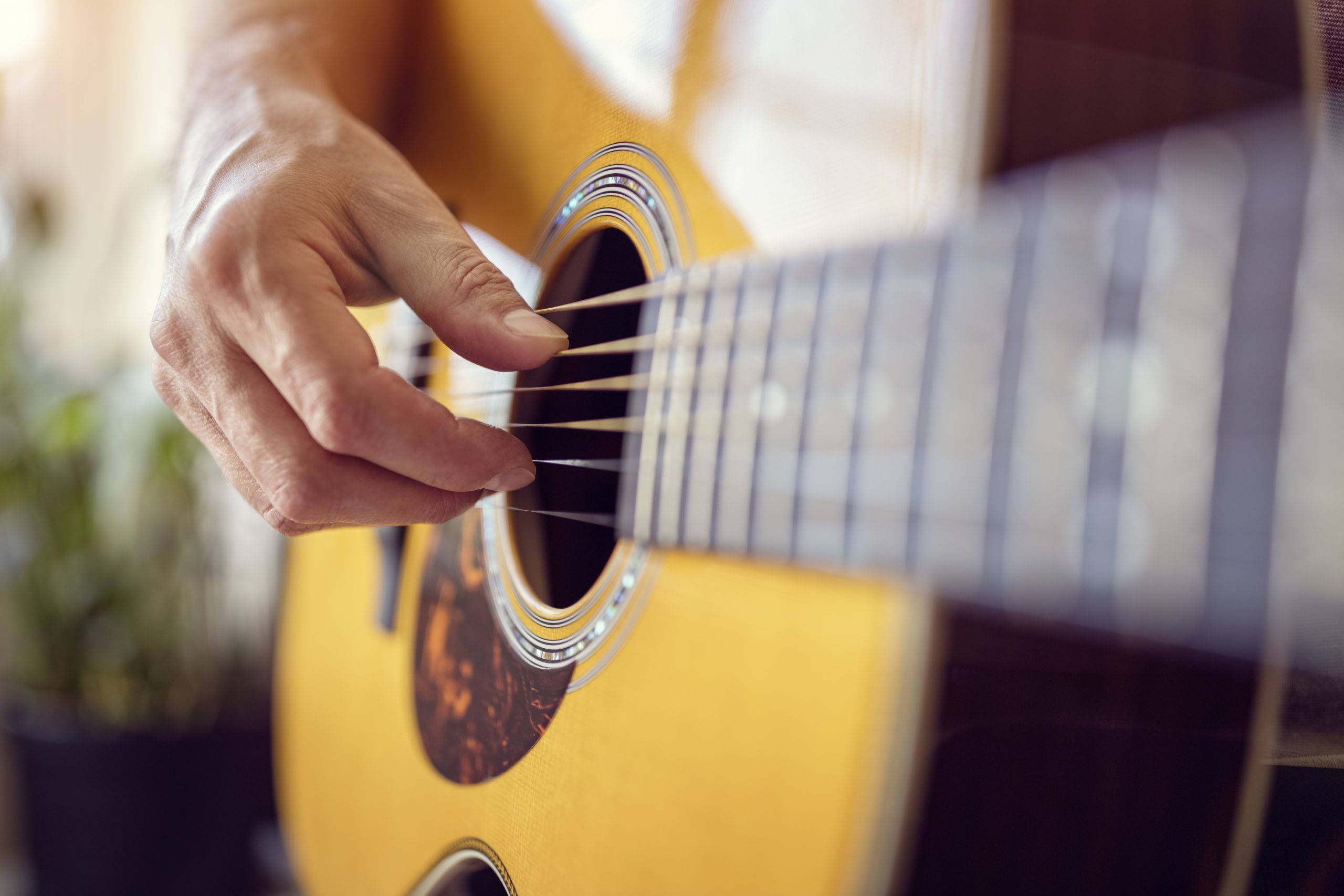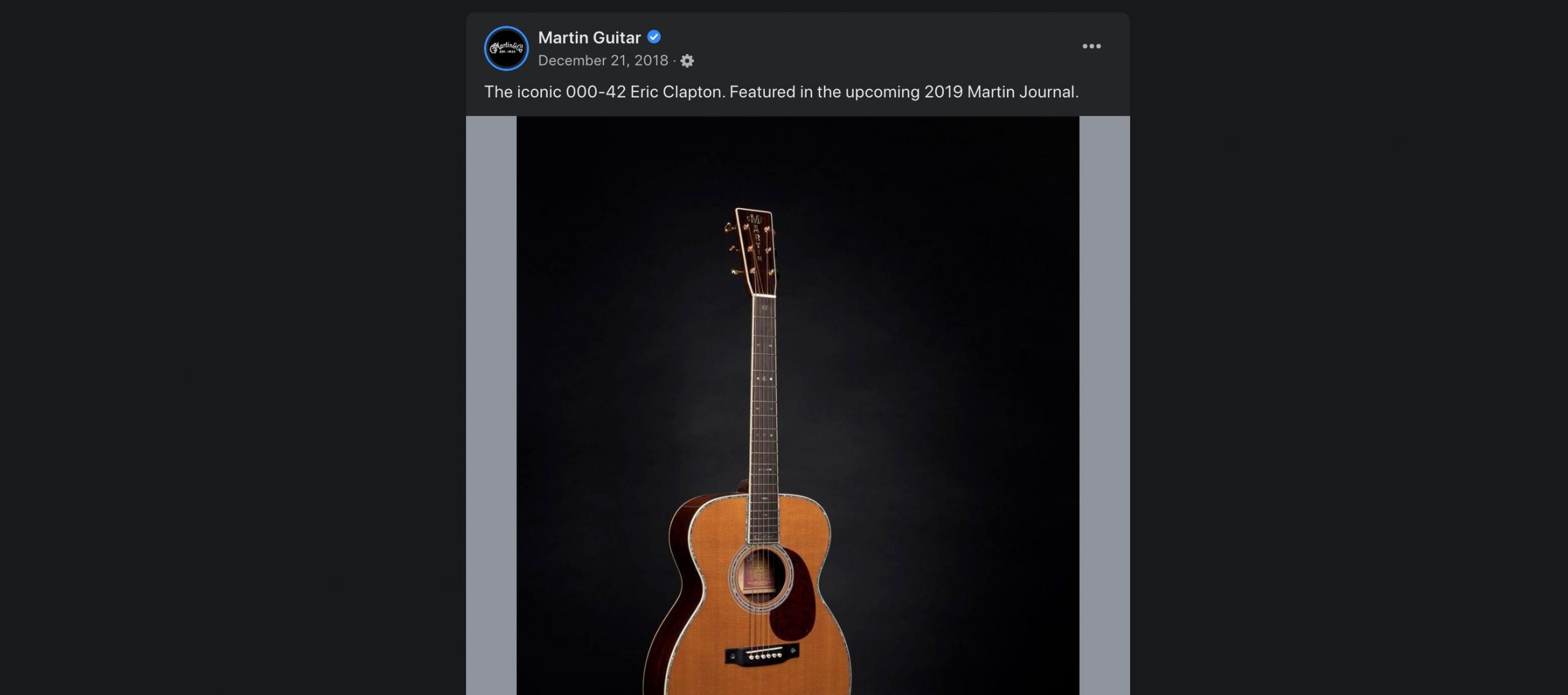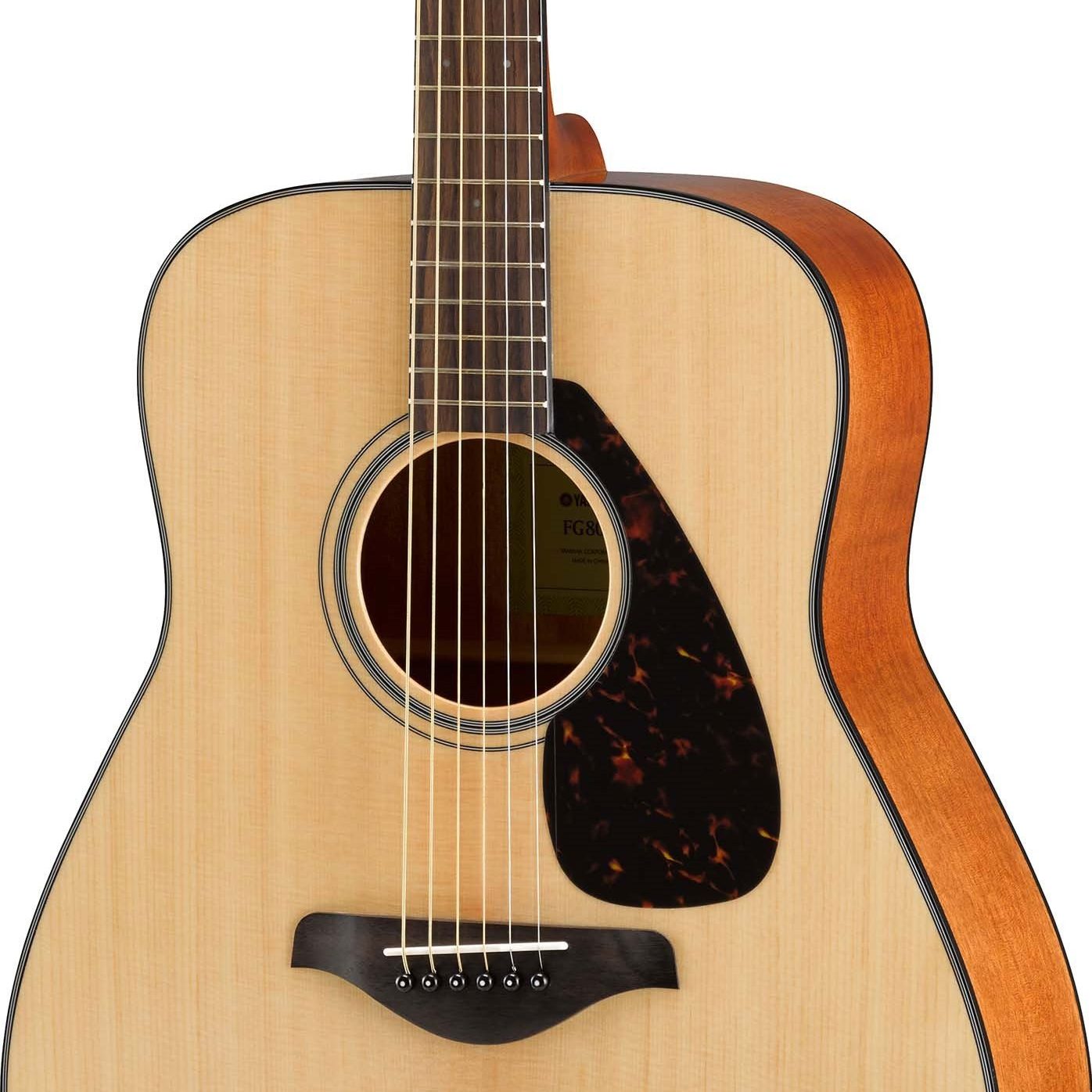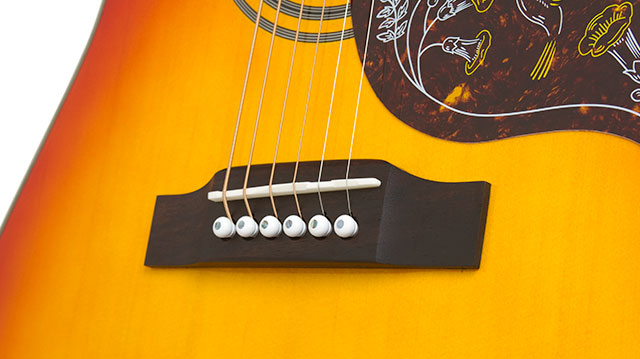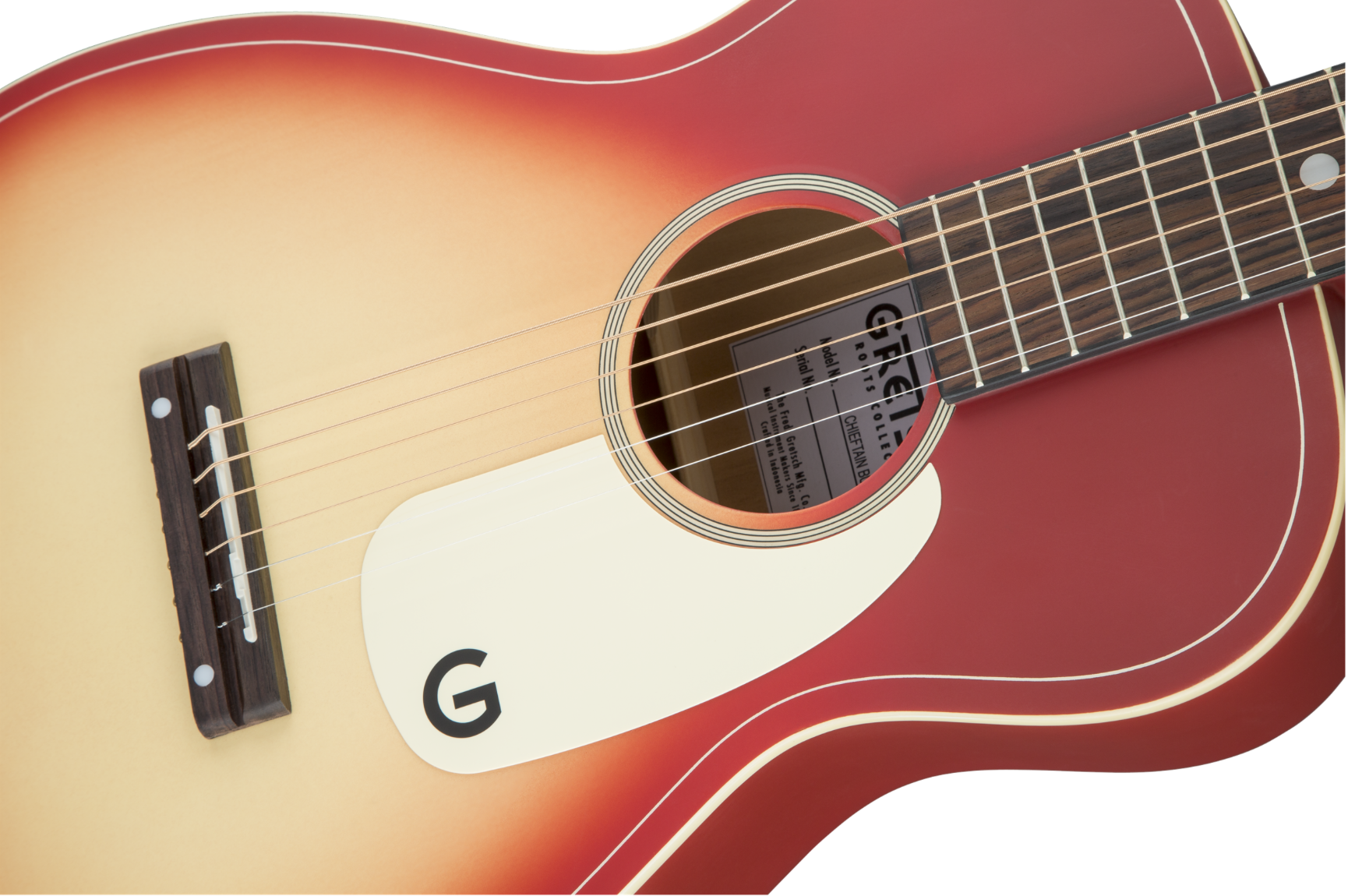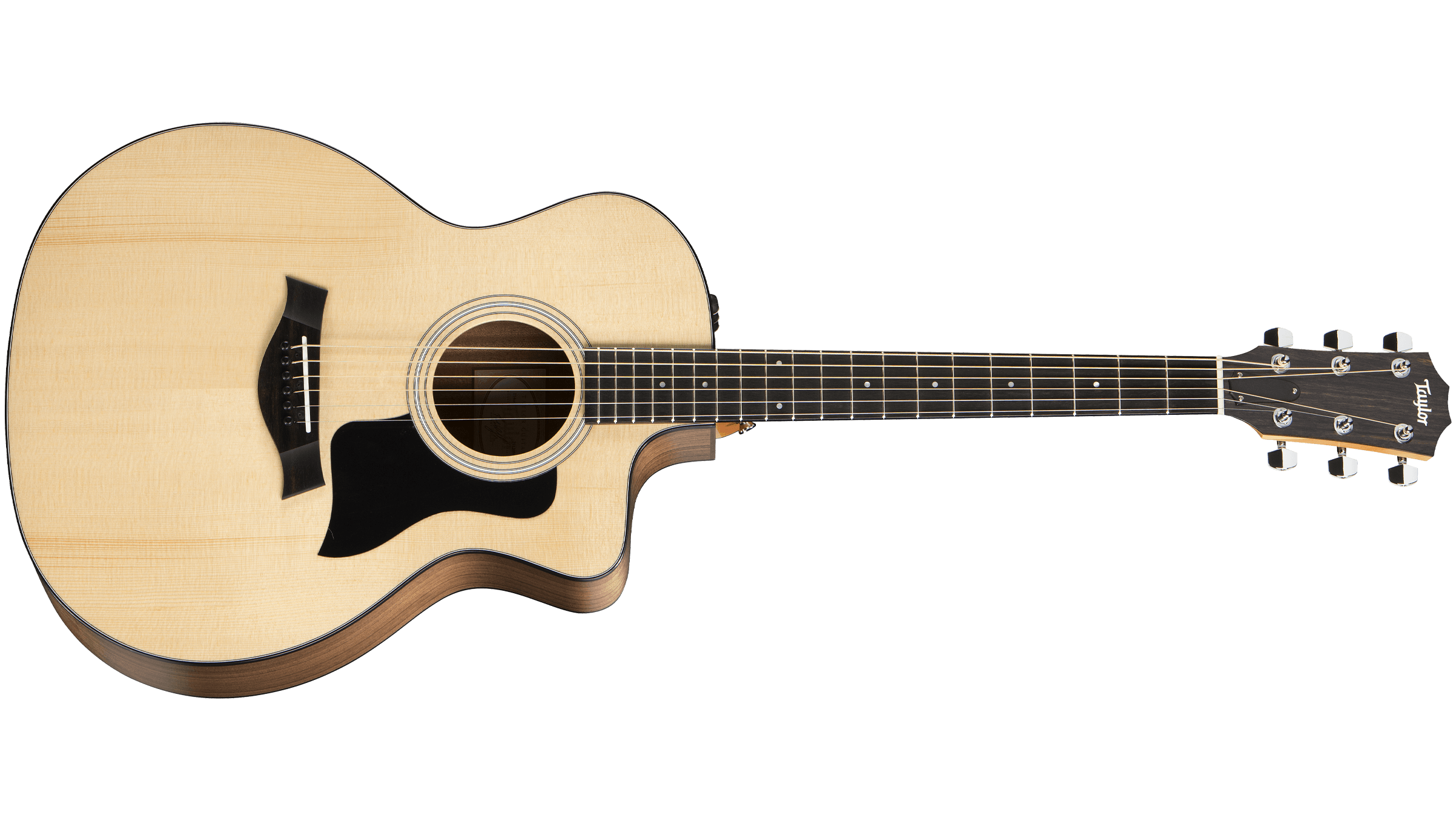KEY TAKEAWAYS
- 12-string acoustic guitars offer a unique and expansively bright sound. This sound defined a certain era of music in the 1960s by artists such as George Harrison.
- Playing a 12-string guitar is no different from a standard six-string guitar, as the same chord shapes apply.
- The only downside for guitar players going with a 12-string is that they fall out of tune quicker and necessitate tuning 12 strings. Also, keep extra strings on hand as replacements.
If you are new to the world of acoustic instruments, you may want to learn how to play a 12-string guitar. Many of the best guitars, after all, feature 12 strings, which add another dimension to the tonality. As a matter of fact, many of the best acoustic guitars have 12 strings. So why play a 12-string guitar, and what are some tips to get started? Keep reading to find out.
Why Play a 12-String Guitar?
If you are just learning how to play guitar, you may chafe at the thought of adding six more strings after you might’ve invested in a nice quality guitar like the best acoustic guitars under 1000. This is especially true if you are just learning how to strum without a pick. However, 12-string guitars can go places, sound-wise, that traditional acoustics simply cannot. That 12-string sound practically defined the California sound of the 1960s. It’d be wise to also learn about medium vs light guitar strings.
As an added bonus, you don’t really need to learn anything new with a 12-string. If you already know how to play guitar chords, those shapes carry onto a 12-string acoustic or electric guitar.
How to Play a 12-String Acoustic Guitar
The first thing you need to realize is that you play a 12-string guitar exactly as you do a regular guitar, as the same chord shapes and tuning possibilities apply to both, though 12-string models allow for more experimentation. Here are some tips for getting started.
Get Good at Tuning
The only downside to playing 12-string guitar is, well, they have 12 strings. Each of these strings needs to be tuned before playing. Even more frustrating? Each string is placed next to a double that is in a different octave, and if these two strings are not exactly in tune, it will sound awful. There is simply no “close enough” with 12-string guitars. They must be tuned often and tuned perfectly. Practice makes perfect, however, so grab your tuner and get started.
Try Different Tunings
Having said that, the two matching strings do not have to be on the same note at a different octave. You can do whatever you want, within reason. Experiment with different tunings to find unique chord shapes that truly provide a sound you could not get from a standard acoustic.
Have Plenty of Strings on Hand
Twelve strings mean 12 more chances for something to go wrong. In other words, have plenty of replacement strings ready to go when the inevitable happens.
12-String Acoustic FAQs
Who plays 12-string guitars?
Famous musicians throughout the 20th century and beyond play twelve-string guitars, from The Beatles to The Byrds. If it is rock music, it is likely to feature a 12-string. David Bowie, Jimmy Page, Stevie Ray Vaughan, and many others took up this type of instrument.
How do you use a 12-string guitar?
Whether acoustic or a 12-string electric guitar, you use it to strum or fingerpick as you would with a regular guitar in standard tuning. There are some real secrets here, as a twelve-string plays just like a standard guitar, despite different string tension.
Are 12-string guitars good for beginners?
While not difficult to play, thanks to a wider neck than a 6-string guitar, the added strings do make this type harder to tune. This could be a sticking point for beginners, as they often eschew the extra strings in favor of a six-string guitar. A 6-string option like the guitar we discuss in this DR100 review would be easier to tune and play as a beginner.
STAT
“Each of the 6 open notes is expressed in a closely set pair of strings, making 12 strings total. The first four notes from the top — E-A-D-G — are paired in octaves. The bottom two — B & E — are paired in unison.” (source)
TIP: Keep your guitar clean and properly maintained to keep it in tune longer.
——–
Sources:
https://eastwoodguitars.com/blogs/news/12-string-guitar-guide-what-you-need-to-know
https://en.wikipedia.org/wiki/Twelve-string_guitar
https://blog.andertons.co.uk/learn/12-string-acoustic-guitar
https://www.prolessons.com/12-string-guitars-pros-cons
https://www.youtube.com/watch?v=gbhbi7u4fo8




